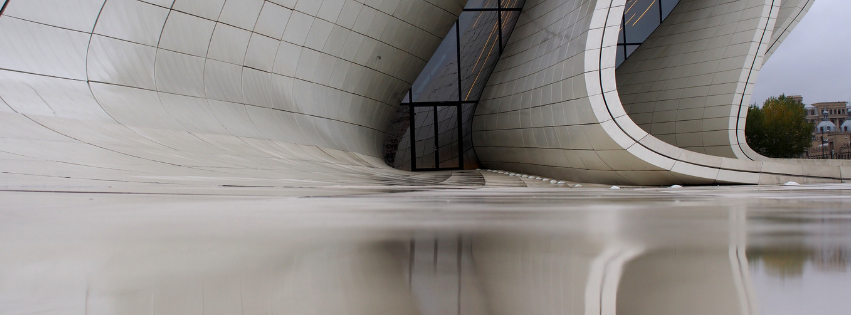
Architectural photography is an art of capturing the soul of a structure. It’s about showcasing the grandeur of a skyscraper, the intricate details of a historic facade, or the interplay of light and shadow within a modern interior. But achieving truly stunning architectural photos often requires more than just a camera and lens. It demands the right accessories to overcome challenges, enhance perspectives, and unlock creative possibilities. This guide will delve into the world of essential tools for architectural photography, equipping you with the knowledge and recommendations to elevate your craft and capture breathtaking images of the built environment.
Must-Have Accessories for Architectural Photography
These essential tools are the building blocks of any architectural photographer’s kit:
Tripod: The Foundation of Sharpness
In architectural photography, stability is paramount. A sturdy tripod is your best friend, especially when shooting in low-light conditions, using long exposures, or capturing intricate details that require absolute sharpness. A quality tripod like the Vanguard Alta Pro 2+ 263AB 100 Aluminum Tripod with SBH-100 Ball Head provides a rock-solid foundation for your camera, ensuring sharp images even in challenging situations. Its versatile design allows for various shooting angles, and the smooth ball head enables precise framing and effortless panning.
Tilt-Shift Lens: Correcting Perspectives
One of the biggest challenges in architectural photography is perspective distortion, where buildings appear to converge towards the top. Tilt-shift lenses are specifically designed to address this issue. They allow you to control the plane of focus and perspective, correcting converging lines and keeping vertical lines parallel. This not only creates more realistic representations of buildings but also unlocks unique creative possibilities, such as the miniature-like effect often used in architectural photography. Depending on your camera system, consider the Canon TS-E 24mm f/3.5L II Tilt-Shift Lens or the Rokinon 24mm F3.5 Tilt Shift Lens for Nikon F.
Polarizing Filter: Taming Reflections
Reflections can be a nuisance in architectural photography, obscuring details and creating unwanted glare. A polarizing filter is a must-have accessory for minimizing reflections from glass windows, water surfaces, and other reflective materials. It also helps to enhance colors, deepen blue skies, and improve overall contrast. The B+W 77mm XS-Pro HTC Kaesemann Circular Polarizer MRC Nano Filter is a top choice, known for its slim profile (preventing vignetting), multi-resistant coating (for durability), and exceptional optical quality.
Graduated Neutral Density (GND) Filters: Balancing Exposure
Architectural scenes often present a significant contrast between bright skies and darker foregrounds. This can lead to overexposed skies or underexposed buildings. Graduated Neutral Density (GND) filters help to balance this exposure difference by gradually darkening the sky while leaving the foreground unaffected. This allows you to capture detail in both the sky and the building, creating a more balanced and visually appealing image. A versatile set like the Lee Filters 100mm System Seven5 GND Kit offers a range of filter strengths for different lighting conditions.
Remote Shutter Release: Eliminating Shake
Even the slightest camera shake can result in blurry images, especially when using slower shutter speeds or shooting in low light. A remote shutter release allows you to trigger the camera without physically touching it, eliminating camera shake and ensuring sharp images. A wireless remote like the Aodelan Wireless Remote Shutter Release offers convenience and flexibility, with compatibility across various camera brands and long-range capabilities. Many modern cameras also offer built-in Wi-Fi or Bluetooth functionality, allowing you to control the camera remotely using a smartphone app. This can be a convenient alternative to a dedicated remote shutter release.
Level: Ensuring Straight Horizons
Keeping your horizons level is crucial in architectural photography, especially when capturing buildings with strong horizontal lines. While you can correct tilted horizons in post-processing, it’s always best to get it right in-camera. A hot-shoe mounted level like the Vello Hot Shoe Bubble Level is a simple yet effective tool to ensure your camera is perfectly level, saving you time and effort in editing.
Drone: Gaining a Unique Perspective
While not strictly an “accessory,” a drone can significantly expand your creative possibilities in architectural photography. Capturing aerial shots allows you to showcase buildings from unique angles and perspectives, revealing their overall form and relationship with the surrounding environment. Drones like the DJI Mavic 3 or Autel EVO II offer high-quality cameras and intelligent flight modes, making it easier than ever to capture stunning aerial perspectives of architecture.
Enhancing Your Architectural Photography
Beyond the essentials, these accessories can further enhance your architectural photography:
- Lens Filters:
- Neutral Density (ND) Filters: ND filters reduce the amount of light entering the lens, allowing you to use slower shutter speeds for creative effects like blurring moving elements (e.g., clouds, water) or achieving a long exposure look even in bright daylight.
- UV Filters: While primarily used for lens protection, UV filters can also help to reduce haze and improve image clarity.
- Camera Bags: A comfortable and functional camera bag is essential for carrying your gear and protecting it from the elements. A backpack like the Peak Design Everyday Backpack offers versatility, weatherproof design, and customizable compartments to accommodate your camera, lenses, and accessories.
- Software: Post-processing plays a significant role in architectural photography. Software like Adobe Lightroom and Photoshop allows you to correct perspective distortion, adjust white balance, enhance details, and fine-tune your images to achieve your desired aesthetic. Explore specialized architectural photography software like PTGui or Autopano Giga for creating stunning panoramas and capturing a wider field of view.
Architectural photography is a captivating pursuit that allows you to capture the beauty, grandeur, and intricate details of the built environment. By utilizing the right accessories, you can overcome challenges, enhance your creative vision, and elevate your photography to new heights. From tripods and tilt-shift lenses to polarizing filters and GND filters, these tools empower you to capture stunning images that truly showcase the artistry and complexity of architecture.
Liked this post? Check out some of our others:
Freezing the Thrill: A Guide to Sports Photography
Eyes in the Sky: Choosing the Best Drone Camera for Aerial Photography
